8-26-2019

Monte-Carlo (August 24, 2019) – The 15th edition of the Palermo-Montecarlo marked the fifth and final event of the International Maxi Association’s Mediterranean Maxi Offshore Challenge 2018-2019 and fielded fifty-one boats this year.
Miguel Galuccio’s Reichel/Pugh 84’ maxi Vera (formerly My Song) was first to cross the finish line winning one of the Giuseppe Tasca d’Almerita Trophy. Vera’s crew, including Dutch Volvo Ocean Race legend Bouwe Bekking and Olympic champion Michele Regolo, completed nearly 500 miles of racecourse (on the direct route) in two days, 17 hours and 13 minutes — smashing the record set by Esimit Europa 2 in 2015. Esimit Europa 2 is a Reichel/Pugh-designed 100’ canting keel supermaxi, first launched as Alfa Romeo and is now the Australia-based Black Jack. (more…)
8-26-2019

 Newport Beach, CA (August 25, 2019) – Congratulations to Alec Oberschmidt and his team for the overall win (and B division win for the third year in a row) at the 2019 Long Point Race Week aboard their Reichel/Pugh-designed 50’ racer Staghound. David Clark’s ULDB 70 Grand Illusion with Reichel/Pugh-designed keel and rudder appendages was 2nd in ORR Division. Grand Illusion won the Transpac overall in 2015. (more…)
Newport Beach, CA (August 25, 2019) – Congratulations to Alec Oberschmidt and his team for the overall win (and B division win for the third year in a row) at the 2019 Long Point Race Week aboard their Reichel/Pugh-designed 50’ racer Staghound. David Clark’s ULDB 70 Grand Illusion with Reichel/Pugh-designed keel and rudder appendages was 2nd in ORR Division. Grand Illusion won the Transpac overall in 2015. (more…)
8-20-2019

 Cowes, Isle of Wight (August 17, 2019) – Mark Rijkse’s Reichel/Pugh-designed GP42 42° South (ex-Seawonder 007) shone brightly at the 2019 COWES WEEK, scoring four bullets in six races to win Class IRC 0, winning the prestigious Brittania Cup and New York Yacht Club Challenge Cup in two of those races. (more…)
Cowes, Isle of Wight (August 17, 2019) – Mark Rijkse’s Reichel/Pugh-designed GP42 42° South (ex-Seawonder 007) shone brightly at the 2019 COWES WEEK, scoring four bullets in six races to win Class IRC 0, winning the prestigious Brittania Cup and New York Yacht Club Challenge Cup in two of those races. (more…)
7-12-2019

 A piece of Dr. Skip Sheldon’s legacy lives on as his 66’ racer-cruiser Zaraffa continues to win with the grateful U.S. Naval Academy Varsity Offshore Sailing Team.
A piece of Dr. Skip Sheldon’s legacy lives on as his 66’ racer-cruiser Zaraffa continues to win with the grateful U.S. Naval Academy Varsity Offshore Sailing Team.
Sheldon, who began his sailing career as a student, commissioned Reichel/Pugh Design No. 96 Zaraffa as a dual-purpose racer-cruiser, built by New England Boatworks and launched in 1999. A rugged design, Sheldon never wanted the boat to be the cause of not finishing a race. Zaraffa competed in the 2001 Fastnet race winning class and taking 2nd overall. She raced the Newport-Bermuda four times, claiming the 2002 Lighthouse Trophy win on the crew’s second attempt. She was also first-to-finish with overall honors on the 2003 North Atlantic Challenge from Newport to Cuxhaven, Germany, and in 2011 Zaraffa was 1st Corrected IRC 3 in the Transatlantic Race. She has also raced the Sydney Hobart, Miami to Montego Bay, Round Gotland Race and the Middle Sea Race. In 2018, after a retrofit for the Transatlantic Race, the Sheldon family bestowed the USNA Sailing Team with the gift of Zaraffa for offshore training. (more…)
7-12-2019
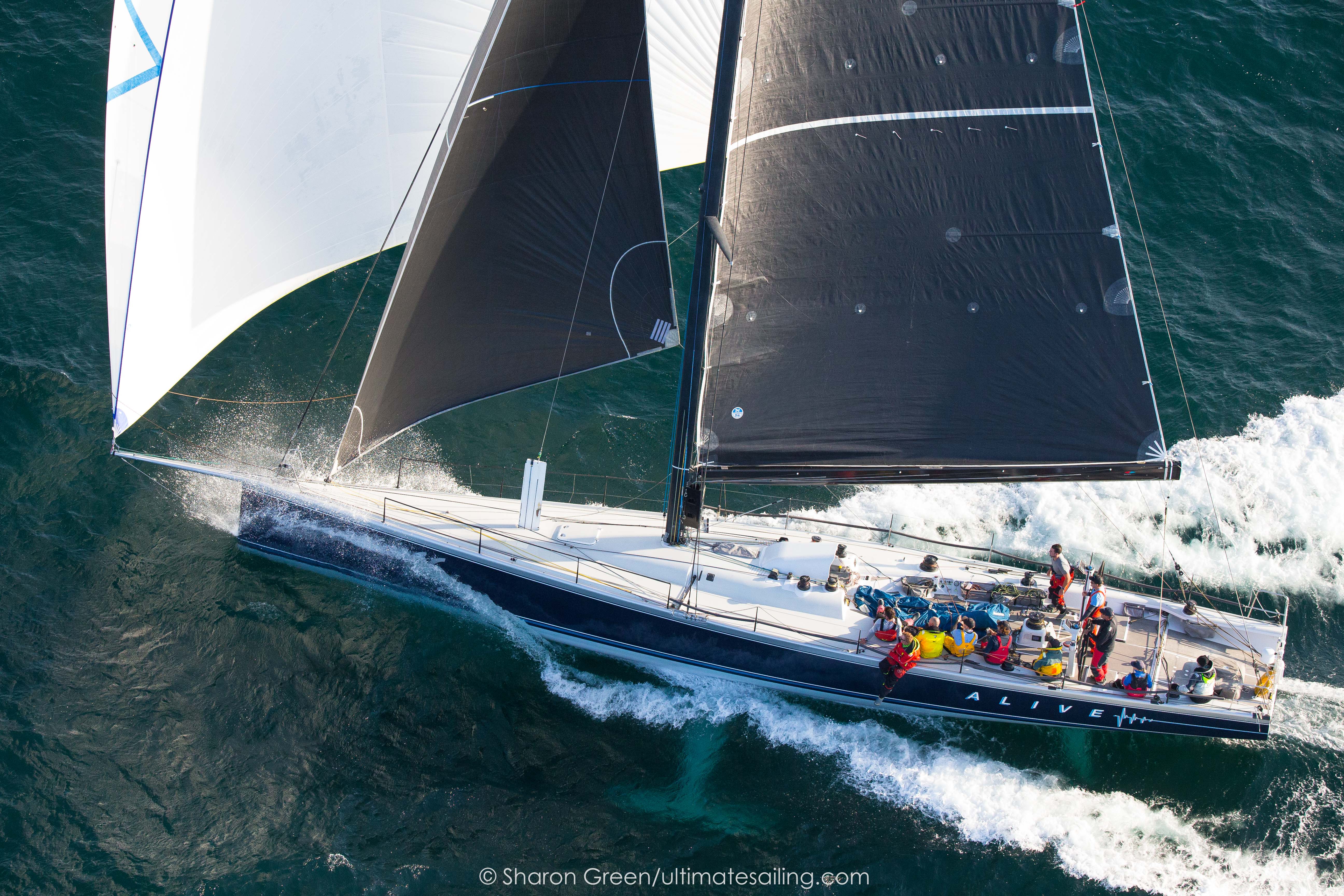
 As the 50th Transpac kicks off this week Reichel/Pugh wishes all owners and crews a safe race, especially our very own Naval Architect and Structural Engineer David Oliver who is navigator aboard the 60’ Good Call.
As the 50th Transpac kicks off this week Reichel/Pugh wishes all owners and crews a safe race, especially our very own Naval Architect and Structural Engineer David Oliver who is navigator aboard the 60’ Good Call.
Reichel/Pugh racers to watch:
Alive – Design 162 – 66’ CBTF Racer (formerly Black Jack & Stark Raving Mad)
Grand Illusion (featuring Reichel/Pugh-designed keel and rudder appendages)
Lady Kanon – Design 177 – 45’ IRC Racer
Shadow II – Design 122 – TP52
Taxi Dancer – Design 39 – 70’ ULDB
Vitesse – Design 199.2 – Southern Cross 52’
Race Tracking
Event News
Photography
Phillip Turner’s Australian-based Alive Yachting team most notably won the 2018 Sydney-Hobart overall, and recently swept 2019 California Offshore races with back-to-back line honor wins in the SoCal 300 (Santa Barbara to San Diego), Coastal Cup (Monterey to Santa Barbara), Spinnaker Cup (San Francisco Bay to Monterey), and Newport-Ensenada Race.
HIGHLIGHTS OF REICHEL/PUGH TRANSPAC HISTORY
Reichel Pugh Maxi’s have held the Transpac Course Record for nearly two decades, from 1999 (Roy Disney’s 75’ Pyewacket Maxi Sled) until 2017 (broken by Comanche – setting the new Merlin trophy elapsed time record at 5 days 01:55:26). Until 2017, the record had been broken 4 times since 1999 – always by Reichel/Pugh designed yachts. R/P yachts have won the Barn Door Trophy 7 out of 10 editions of the race since 1999.
Reichel/Pugh’s original sled design, the 70’ Taxi Dancer took 1st place in Class A in the 1989 Transpac and second overall, this was during the heyday of the California Sleds when Class A of the 1989 race featured 19 Sleds. Thirty years later, Taxi Dancer is still racing!
2015 – WILD OATS XI – Roy Pat Disney’s and Bob Oatley’s 100’ Canting Keel SuperMaxi Wild Oats XI had the fastest elapsed time of 6d 10h 37m 2s to win the 2015 Merlin Trophy and take first in Division 1 at the Transpac’s Diamond Head finish line. Wild Oats XI is a 100-foot custom design famous for its record nine elapsed time victories in thirteen years (2005-2008, 2018) and three overall fleet wins (2014, 2012 & 2005) in the Sydney-Hobart race.
2015 – GRAND ILLUSION – Ed & James McDowell’s Santa Cruz 70 Grand Illusion was the overall winner. She was designed by Bill Lee and features Reichel/Pugh-designed keel and rudder appendages. Grand Illusion has now equaled the record for most overall Transpac wins, joining the 88′ Lurline which won the first two races in 1906 and 1908, and again in 1912. However, Grand Illusion holds the status alone for winning overall three times under the same Owner/Skipper, Ed & James McDowell.
2013 – RP74 WIZARD – David and Peter Askew’s 74’ Reichel/Pugh-designed and New England Boatworks-built Mini-Maxi WIZARD (formerly Bella Mente) finished ‘first’ in the 2013 Transpac Race winning the unique Transpacific Yacht Club’s Perpetual Trophy – a 3.5’ x 4’ plaque of hand carved Hawaiian Koa Wood – better known as the ‘Barn Door.’ This trophy is traditionally awarded to the fixed keel mono-hull employing no stored energy with the fastest elapsed time. Wizard’s elapsed time was 7 days, 7 hours, 53 minutes, 46 seconds, which was 12 hours and 13 minutes slower than Bella Mente’s Barn Door record run of 6 days 19 hours 39 minutes 28 seconds set in 2011.
2011 – RP74 BELLA MENTE – Hap Fauth’s 74’ Mini Maxi BELLA MENTE set a new fixed keel course record of 6 days 19 hours 39 minutes 28 seconds with an average speed of 13.6 knots.
2011 – RPTP52 PATCHES – Jorge Ripsteins R/P-designed TP52 PATCHES won Division 2 followed by R/P designs CRIMINAL MISCHIEF 45’ and VINCITORE 52’.
2011 – GRAND ILLUSION – Ed and James McDowell’s Santa Cruz 70 featuring R/P-designed appendages took first in division and first in fleet overall on corrected time.
2009 – RP100 ALFA ROMEO II – 1st to Finish (Lending Tree got a DNS!) 5 days 14 hours 36m 20s) (Moveable Ballast & Powered Winches Course Record). N. Crichton’s Alfa Romeo II, sailing in the “unlimited” class, was not eligible for the traditional “Barn Door” trophy, but instead was the inaugural winner of a new trophy dedicated by Trisha Steele, called the “Merlin Trophy”. On July 7, 2009, ALFA ROMEO II beat the MORNING GLORY record for best day’s run set in the 2005 race, by sailing 399nm in 24 hours. The next two days she broke her own best-day record by sailing 420nm and 431nm.
2005 – RP86 MORNING GLORY – 1st to Finish (SET NEW RECORD 6 days, 16 hours, 4 minutes, and 11 seconds to win “the Barn Door” trophy) (Moveable Ballast Course Record) – H. Plattner
2005 – RP52 ROSEBUD – 1st Class & 1st Fleet Corrected Overall – R. Sturgeon
2003 – RP77 PEGASUS – 1st to Finish Barn Door Trophy Winner – P. Kahn
2001 – RP75 PEGASUS – 1st to Finish Barn Door Trophy Winner, 2nd Fleet Overall Corrected – P. Kahn
1999 – RP73 PYEWACKET – 1st to Finish Barn Door Trophy Winner (SET NEW RECORD 7 days, 11 hours, 41 minutes, and 27 seconds Ending Merlin’s 20-year record) (Fixed Ballast Course Record) 2nd Fleet Overall Corrected – R. Disney
1995 – RP66 EXILE – 1st Place Class Winner – J. Warwick Miller
1989 – RP70 TAXI DANCER – 1st Place Class Winner (19 Sleds competing), 2nd Place Fleet Overall – M. Rousse
For more information on the yachts contact: [email protected]
ABOUT THE TRANSPAC
First organized by the Transpacific Yacht Club in 1906, the Transpacific Yacht Race or Transpac is an offshore sailing race from Point Fermin in Los Angeles to Diamond Head, just east of Honolulu, a distance of 2,225 nm. This is among the world’s great ocean races, and biennially attracts some of the world’s fastest sailing yachts, some of its most talented offshore racing sailors, and a wide variety of offshore sailing adventurers.
photography courtesy of Sharon Green/Ultimate Sailing
 Porto Cervo (June 8, 2019) – The 12th edition of the Loro Piana Superyacht Regatta was organized by the Yacht Club Costa Smeralda in the waters of Porto Cervo, Sardinia and hosted 20 boats ranging from 25 to 52 metres in length. Reichel/Pugh-designed 100’ Magic Carpet3, owned by YCCS member Sir Lindsay Owen-Jones, won Class “A” ahead of the 33-metre Inoui and the Wally 107 Open Season with a perfect scoreline across all three races. The Silver Jubilee Cup, assigned to the top yacht over 30 metres with an interior cruising set-up and in the division with the most competitors, also went to the WallyCento Magic Carpet3. Jim Pugh was apart of the racing team.
Porto Cervo (June 8, 2019) – The 12th edition of the Loro Piana Superyacht Regatta was organized by the Yacht Club Costa Smeralda in the waters of Porto Cervo, Sardinia and hosted 20 boats ranging from 25 to 52 metres in length. Reichel/Pugh-designed 100’ Magic Carpet3, owned by YCCS member Sir Lindsay Owen-Jones, won Class “A” ahead of the 33-metre Inoui and the Wally 107 Open Season with a perfect scoreline across all three races. The Silver Jubilee Cup, assigned to the top yacht over 30 metres with an interior cruising set-up and in the division with the most competitors, also went to the WallyCento Magic Carpet3. Jim Pugh was apart of the racing team.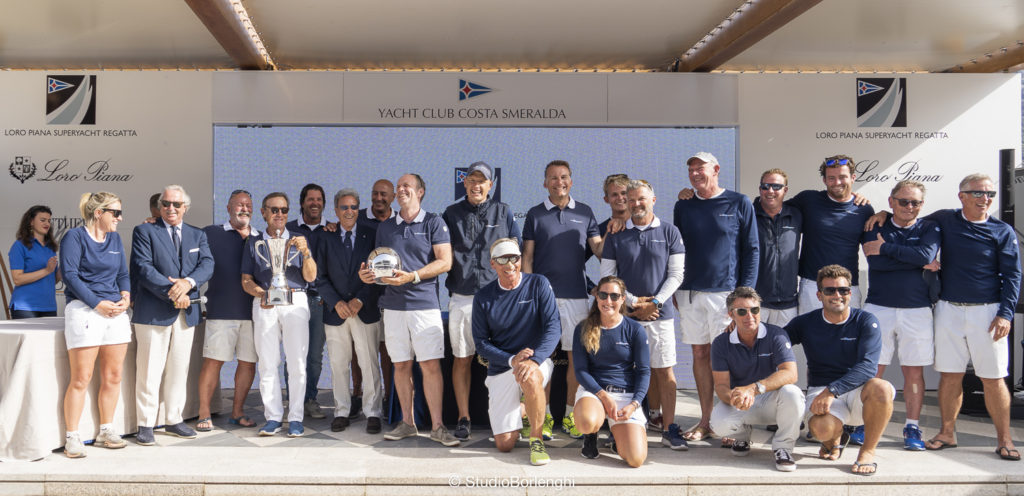 (more…)
(more…)
6-2-2019

San Diego, California (June 2, 2019) – Reichel/Pugh 66’ Canting Keel Mini Maxi ALIVE (formerly Black Jack & Stark Raving Mad) was first to finish (correcting to 7th) in the 5th annual SoCal 300 (300nm), following back-to-back line honor wins in the Spinnaker Cup (San Francisco Bay to Monterey), Coastal Cup (Monterey to Santa Barbara) and Newport-Ensenada. Alive also set a new course record for the 200nm Coastal Cup of 13h 48m 28s. Congratulations to owner Phillip Turner, skipper Duncan Hine and the entire Australian-based Alive Yachting team, who most notably won the 2018 Sydney-Hobart overall. The three-part CA Offshore Race Week now complete, the Alive team is taking on the competitive 17-boat Division 1 in the Transpac Race starting July 10th. (more…)
4-28-2019
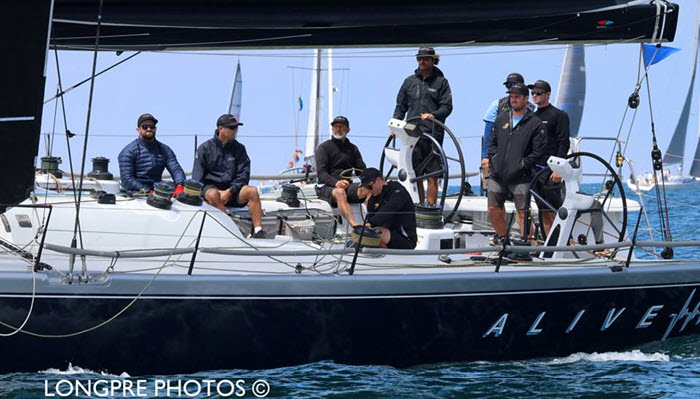
 Ensenada, Mexico (April 28, 2019) – Congratulations to all competitors in the 72nd annual Newport to Ensenada (125nm). On the heels of its 2018 Sydney-Hobart victory, the Australian-based Reichel/Pugh 66’ Canting Keel Mini Maxi ALIVE (formerly Black Jack & Stark Raving Mad) earned the NOSA Trophy for overall best elapsed time, the Amigo Trophy awarded to a first-time skipper and the Lahaina Yacht Club Trophy for best elapsed time all PHRF. Congratulations to owner Phillip Turner, skipper Duncan Hine and the entire Alive Yachting team. (more…)
Ensenada, Mexico (April 28, 2019) – Congratulations to all competitors in the 72nd annual Newport to Ensenada (125nm). On the heels of its 2018 Sydney-Hobart victory, the Australian-based Reichel/Pugh 66’ Canting Keel Mini Maxi ALIVE (formerly Black Jack & Stark Raving Mad) earned the NOSA Trophy for overall best elapsed time, the Amigo Trophy awarded to a first-time skipper and the Lahaina Yacht Club Trophy for best elapsed time all PHRF. Congratulations to owner Phillip Turner, skipper Duncan Hine and the entire Alive Yachting team. (more…)
4-21-2019

 RP100 Black Jack is Winner of 2019 Brisbane to Gladstone Line Honors and Four Cities Cup for best performing yacht.
RP100 Black Jack is Winner of 2019 Brisbane to Gladstone Line Honors and Four Cities Cup for best performing yacht.
Queensland, Australia (April 20, 2019) – 100’ SuperMaxi Black Jack took line honors in the 71st Brisbane to Gladstone with a time of 16 hours, 56 minutes and 33 seconds—just 2 minutes and 36 seconds outside the 14-year record it broke last year. It was the sixth consecutive Brisbane to Gladstone line-honors victory for last year’s runner-up in the Sydney to Hobart and it marked eight wins for Black Jack’s owner Peter Harburg since 2009. (more…)
4-21-2019

 St. Barths (April 21, 2019) — Launched in 2010, Les Voiles de St. Barth is an event created specifically to keep the long, colorful history of racing on the island vibrant — building on Loulou’s Regatta back in the 1970’s with its 100 sailboats to the Transat AG2R, the Route du Rose, and the St Barth Bucket Regatta. The 2019 regatta marked the 10th anniversary and fielded scores of teams across nine classes, despite the remaining traces of hurricane Irma, which ravaged the island in September 2017.
St. Barths (April 21, 2019) — Launched in 2010, Les Voiles de St. Barth is an event created specifically to keep the long, colorful history of racing on the island vibrant — building on Loulou’s Regatta back in the 1970’s with its 100 sailboats to the Transat AG2R, the Route du Rose, and the St Barth Bucket Regatta. The 2019 regatta marked the 10th anniversary and fielded scores of teams across nine classes, despite the remaining traces of hurricane Irma, which ravaged the island in September 2017.
Dominating the Maxi Class 2 for the third year was Windfall’s Michael “Mick” Cotter, who humbly attributes much of their success to luck, however this was Mick’s seventh Les Voiles. The Reichel/Pugh-designed production 94’ Windfall was built by Southern Wind, with interiors by Nauta Yachts, Milan and launched in 2013. Results (more…)

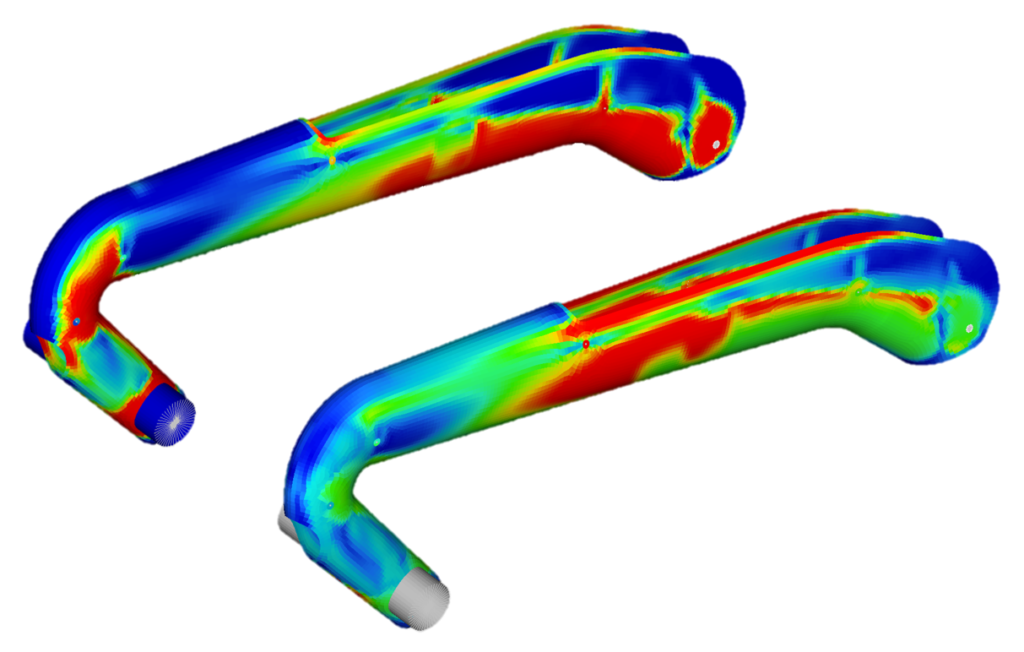


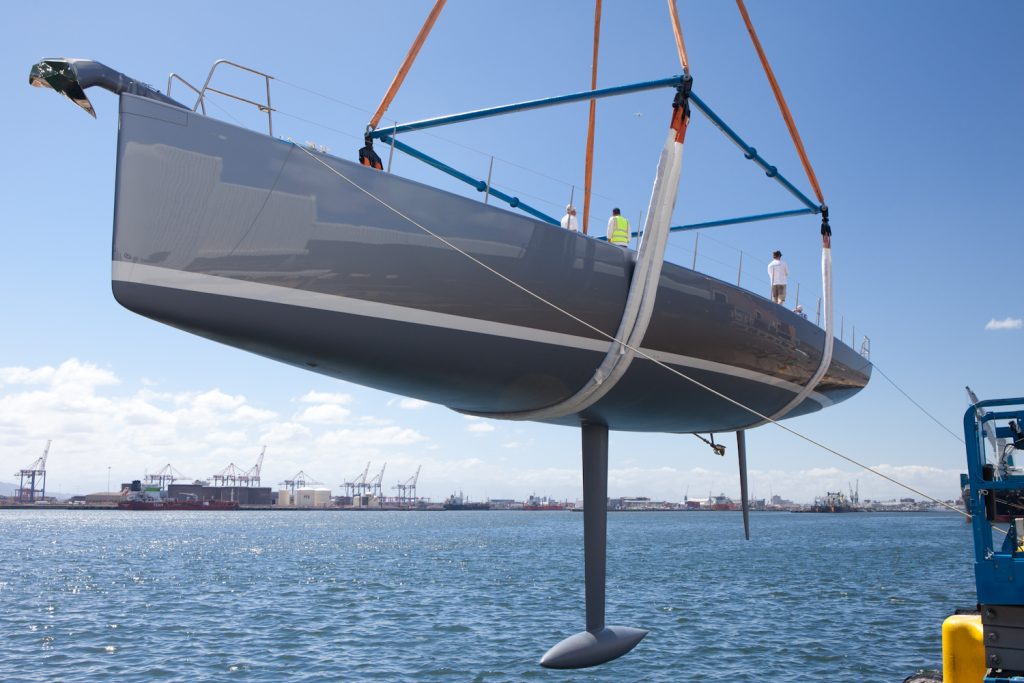


 Newport Beach, CA (August 25, 2019) – Congratulations to Alec Oberschmidt and his team for the overall win (and B division win for the third year in a row) at the 2019 Long Point Race Week aboard their Reichel/Pugh-designed 50’ racer Staghound. David Clark’s ULDB 70 Grand Illusion with Reichel/Pugh-designed keel and rudder appendages was 2nd in ORR Division. Grand Illusion won the Transpac overall in 2015.
Newport Beach, CA (August 25, 2019) – Congratulations to Alec Oberschmidt and his team for the overall win (and B division win for the third year in a row) at the 2019 Long Point Race Week aboard their Reichel/Pugh-designed 50’ racer Staghound. David Clark’s ULDB 70 Grand Illusion with Reichel/Pugh-designed keel and rudder appendages was 2nd in ORR Division. Grand Illusion won the Transpac overall in 2015. 
 Cowes, Isle of Wight (August 17, 2019) – Mark Rijkse’s Reichel/Pugh-designed GP42 42° South (ex-Seawonder 007) shone brightly at the 2019 COWES WEEK, scoring four bullets in six races to win Class IRC 0, winning the prestigious Brittania Cup and New York Yacht Club Challenge Cup in two of those races.
Cowes, Isle of Wight (August 17, 2019) – Mark Rijkse’s Reichel/Pugh-designed GP42 42° South (ex-Seawonder 007) shone brightly at the 2019 COWES WEEK, scoring four bullets in six races to win Class IRC 0, winning the prestigious Brittania Cup and New York Yacht Club Challenge Cup in two of those races. 
 A piece of Dr. Skip Sheldon’s legacy lives on as his 66’ racer-cruiser Zaraffa continues to win with the grateful U.S. Naval Academy Varsity Offshore Sailing Team.
A piece of Dr. Skip Sheldon’s legacy lives on as his 66’ racer-cruiser Zaraffa continues to win with the grateful U.S. Naval Academy Varsity Offshore Sailing Team.
 As the 50th Transpac kicks off this week Reichel/Pugh wishes all owners and crews a safe race, especially our very own Naval Architect and Structural Engineer David Oliver who is navigator aboard the 60’ Good Call.
As the 50th Transpac kicks off this week Reichel/Pugh wishes all owners and crews a safe race, especially our very own Naval Architect and Structural Engineer David Oliver who is navigator aboard the 60’ Good Call. Porto Cervo (June 8, 2019) – The 12th edition of the Loro Piana Superyacht Regatta was organized by the Yacht Club Costa Smeralda in the waters of Porto Cervo, Sardinia and hosted 20 boats ranging from 25 to 52 metres in length. Reichel/Pugh-designed 100’ Magic Carpet3, owned by YCCS member Sir Lindsay Owen-Jones, won Class “A” ahead of the 33-metre Inoui and the Wally 107 Open Season with a perfect scoreline across all three races. The Silver Jubilee Cup, assigned to the top yacht over 30 metres with an interior cruising set-up and in the division with the most competitors, also went to the WallyCento Magic Carpet3. Jim Pugh was apart of the racing team.
Porto Cervo (June 8, 2019) – The 12th edition of the Loro Piana Superyacht Regatta was organized by the Yacht Club Costa Smeralda in the waters of Porto Cervo, Sardinia and hosted 20 boats ranging from 25 to 52 metres in length. Reichel/Pugh-designed 100’ Magic Carpet3, owned by YCCS member Sir Lindsay Owen-Jones, won Class “A” ahead of the 33-metre Inoui and the Wally 107 Open Season with a perfect scoreline across all three races. The Silver Jubilee Cup, assigned to the top yacht over 30 metres with an interior cruising set-up and in the division with the most competitors, also went to the WallyCento Magic Carpet3. Jim Pugh was apart of the racing team.

 Ensenada, Mexico (April 28, 2019) – Congratulations to all competitors in the 72nd annual Newport to Ensenada (125nm). On the heels of its 2018 Sydney-Hobart victory, the Australian-based Reichel/Pugh 66’ Canting Keel Mini Maxi ALIVE (formerly Black Jack & Stark Raving Mad) earned the NOSA Trophy for overall best elapsed time, the Amigo Trophy awarded to a first-time skipper and the Lahaina Yacht Club Trophy for best elapsed time all PHRF. Congratulations to owner Phillip Turner, skipper Duncan Hine and the entire Alive Yachting team.
Ensenada, Mexico (April 28, 2019) – Congratulations to all competitors in the 72nd annual Newport to Ensenada (125nm). On the heels of its 2018 Sydney-Hobart victory, the Australian-based Reichel/Pugh 66’ Canting Keel Mini Maxi ALIVE (formerly Black Jack & Stark Raving Mad) earned the NOSA Trophy for overall best elapsed time, the Amigo Trophy awarded to a first-time skipper and the Lahaina Yacht Club Trophy for best elapsed time all PHRF. Congratulations to owner Phillip Turner, skipper Duncan Hine and the entire Alive Yachting team. 
 RP100 Black Jack is Winner of 2019 Brisbane to Gladstone Line Honors and Four Cities Cup for best performing yacht.
RP100 Black Jack is Winner of 2019 Brisbane to Gladstone Line Honors and Four Cities Cup for best performing yacht.
 St. Barths (April 21, 2019) — Launched in 2010, Les Voiles de St. Barth is an event created specifically to keep the long, colorful history of racing on the island vibrant — building on Loulou’s Regatta back in the 1970’s with its 100 sailboats to the Transat AG2R, the Route du Rose, and the St Barth Bucket Regatta. The 2019 regatta marked the 10th anniversary and fielded scores of teams across nine classes, despite the remaining traces of hurricane Irma, which ravaged the island in September 2017.
St. Barths (April 21, 2019) — Launched in 2010, Les Voiles de St. Barth is an event created specifically to keep the long, colorful history of racing on the island vibrant — building on Loulou’s Regatta back in the 1970’s with its 100 sailboats to the Transat AG2R, the Route du Rose, and the St Barth Bucket Regatta. The 2019 regatta marked the 10th anniversary and fielded scores of teams across nine classes, despite the remaining traces of hurricane Irma, which ravaged the island in September 2017.